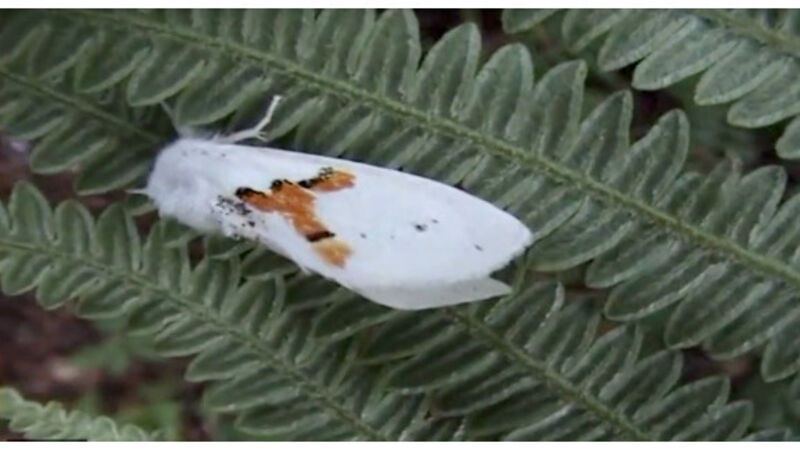‘Extinct’ white moth found throughout Kerry woodland

A native woodland in Kerry is home to a rare moth which was thought to have been extinct.

The White Prominent moth, Leucodonta bicoloria, a snow-white moth with orange markings, was “one of those mysterious, iconic species”, which was thought to be extinct in both Britain and Ireland, according to the ecologists who rediscovered it.
The moth, which had gained almost mythical status amongst lepidopterists, was rediscovered 10 years ago, in Glencar, a spectacular remote area west of Killarney, Co Kerry, and it has now been found throughout the valley.
It had last been recorded in 1938, in birch woodlands on Robert’s Island, owned by the exclusive Ard na Sidhe Hotel, on the eastern edge of Caragh Lake, at the end of the Caragh river valley.
The search for the moth had never ceased, but with no sighting in 70 years, some people felt the moth was “a figment of everyone’s imagination”, according to Paul Waring, a member of the North-based environmental team sponsored by the Heritage Council of Great Britain, on finding it on a muggy night in early June, 2008.
The hotel, part of the five-star Killarney Hotel Europe and Dunloe Castle group, gave permission to the Belfast-based Allen and Mellon ecological consultants, leaders in moth and butterfly surveys, to explore and set traps.
They set traps in and around the mature, white-barked birch, which was still in the area. Some of the trees were 100 years old and the first White Prominent was discovered on a bracken frond at the foot of birch, on the morning of June 7.
Since then, other native woodland species throughout the Glencar valley, including that of oak and willow, have revealed the presence of the rare species.
This year, the team, which carries out regular updates, recorded 34 White Prominents.
The valley, which still has stands of mature native oak, birch and willow, in spite of felling, and sterile pine forestry plantations, has 76 different moth species, some of which need more work to identify.
The discovery has been kept largely quiet, amid fears the privately owned woods would be overrun and the species disturbed.
Joan Breen, of Blackstones B&B, on the banks of the Caragh River and the owner of Blackstones oak wood, where the moth has been found, also, said most people in the valley know about the moth now, although it hasn’t had much publicity.
“Experts and enthusiasts from around the world are increasingly excited about the rare moth,” Joan said.
“People here just take it in their stride.”











